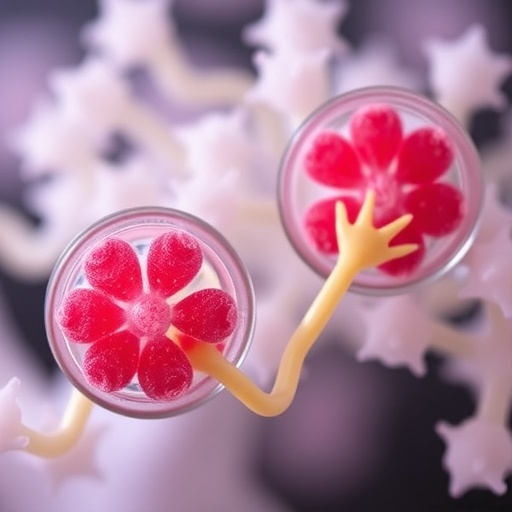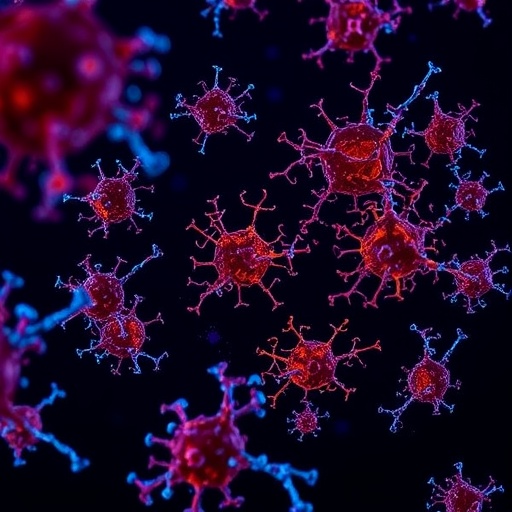Spending long periods in space not only leads to muscle atrophy and reductions in bone density, it also has lasting effects on the brain. However, little is known about how different tissues of the brain react to exposure to microgravity, and it remains unclear whether and to what extent the neuroanatomical changes so far observed persist following return to normal gravity. In cooperation with Russian colleagues and with neuroscientists based at the University of Antwerp led by Floris L. Wuyts, LMU neurologist Professor Peter zu Eulenburg has completed the first long-term study in Russian cosmonauts. In this study, which appears in the New England Journal of Medicine, they show that differential changes in the three main tissue volumes of the brain remain detectable for at least half a year after the end of their last mission.
The study was carried out on ten cosmonauts, each of whom had spent an average of 189 days on board the International Space Station (ISS). The authors used magnetic resonance tomography (MRT) to image the brains of the subjects both before and shortly after the conclusion of their long-term missions. In addition, seven members of the cohort were re-examined seven months after their return from space. "This is actually the first study in which it has been possible to objectively quantify changes in brain structures following a space mission also including an extended follow-up period," zu Eulenburg points out.
The MRT scans performed in the days after the return to Earth revealed that the volume of the grey matter (the part of the cerebral cortex that mainly consists of the cell bodies of the neurons) was reduced compared to the baseline measurement before launch. In the follow-up scans done 7 months later, this effect was partly reversed, but nevertheless still detectable. In contrast, the volume of the cerebrospinal fluid, which fills the inner and outer cavities of the brain, increased within the cortex during long-term exposure to microgravity. Moreover, this process was also observable in the outside spaces that cover the brain after the return to Earth, while the cerebrospinal fluid spaces within returned to near normal size. The white matter tissue volume (those parts of the brain that are primarily made up of nerve fibers) appeared to be unchanged upon investigation immediately after landing. However, the subsequent examination 6 months later showed a widespread reduction in volume relative to both earlier measurements. In this case, the researchers postulate that over the course of a longer stint in space, the volume of the white matter may slowly be replaced by an influx of cerebrospinal fluid. Upon return to Earth, this process is then gradually reversed, which then results in a relative reduction of white matter volume.
"Taken together, our results point to prolonged changes in the pattern of cerebrospinal fluid circulation over a period of at least seven months following the return to Earth," says zu Eulenburg. "However, whether or not the extensive alterations shown in the grey and the white matter lead to any changes in cognition remains unclear at present," he adds. So far the only clinical indication for detrimental effects is a reduction in visual acuity that was demonstrated in several long-term space travelers. These changes may very well be attributable to the increased pressure exerted by the cerebrospinal fluid on the retina and the optic nerve. The governing cause for the widespread structural changes in the brain following long spaceflights might lie in minimal pressure changes within the body's various water columns under conditions of microgravity that have a cumulative effect over time. According to the authors, to minimize the risks associated with long-term missions and to characterize any clinical significance of their structural findings, further studies using a wider range of diagnostic methods are deemed essential.
###
The New England Journal of Medicine 2018
Publication:
Brain Tissue-Volume Changes in Cosmonauts
Angelique Van Ombergen, Peter zu Eulenburg, Floris L. Wuyts, et al.
NEJM 2018
Contact:
Prof. Dr. med. Peter zu Eulenburg
Functional Imaging
German Center for Vertigo and Balance Disorders
Phone: +49 (0)89 / 4400-74822
Fax: +49 (0)89 / 4400-74801
Email: [email protected]
Web: https://www.gsn.uni-muenchen.de/people/faculty/associate/peter-zu-eulenburg/index.html
Media Contact
Dr. Kathrin Bilgeri
[email protected]
49-892-180-3423
http://www.uni-muenchen.de




